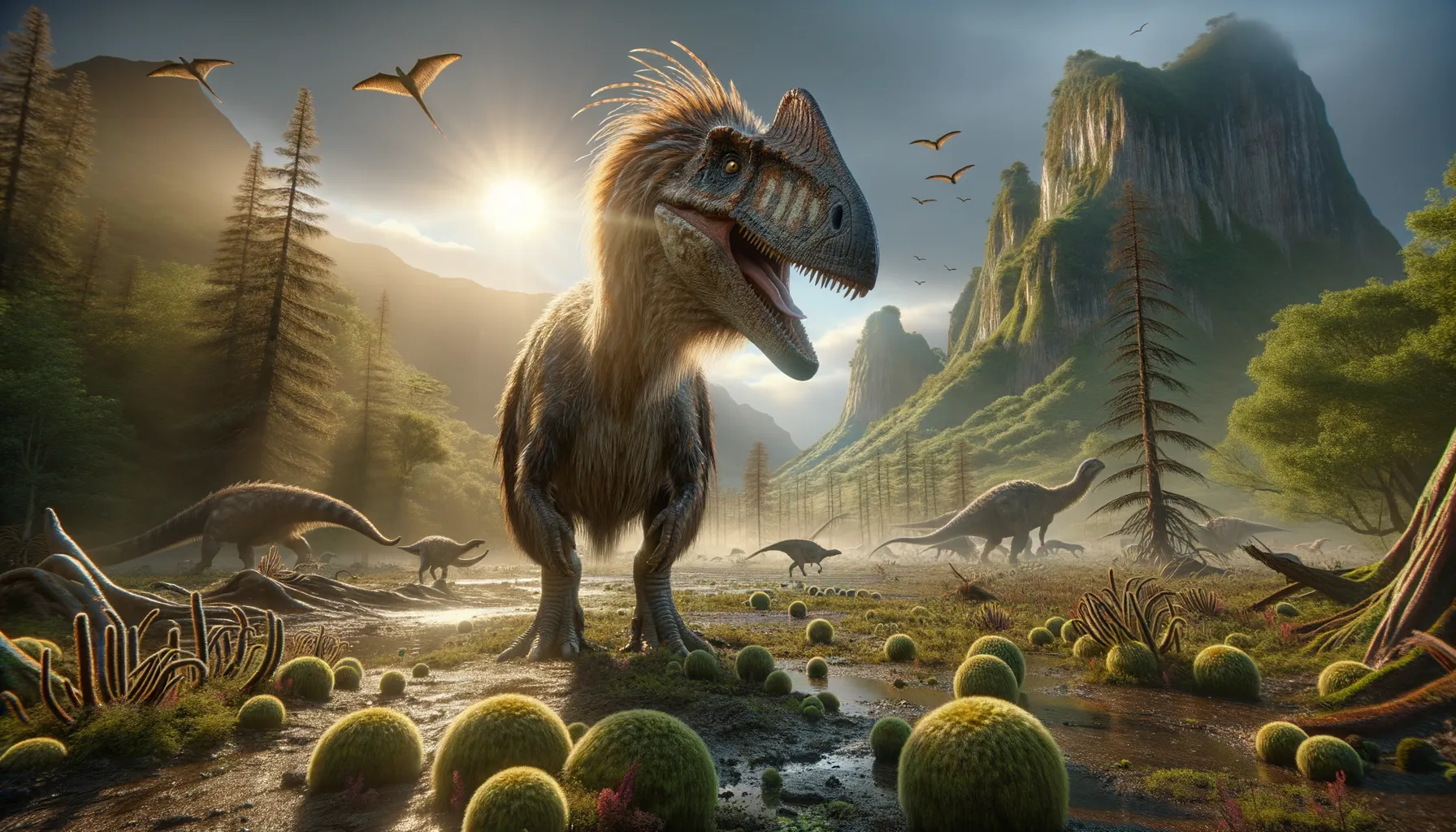
Nankangia
A beak-like jaw and feathered features.
Period
Cretaceous
Length
Approximately 4 meters long.
Height
Roughly 2 meters tall.
Weight
Estimated around 500 kilograms.
Nankangia was a small, feathered dinosaur that lived during the Late Cretaceous period in what is now China. Part of the Oviraptorosauria group, it had a distinctive beak-like jaw without teeth and possessed feather-like structures. Its discovery adds insight into the diversity and evolution of theropod dinosaurs in prehistoric Asia. Understanding Nankangia helps paleontologists piece together the ecological dynamics of its time.
Diet
As an oviraptorosaur, it likely had an omnivorous diet. This would include a variety of foods such as small animals, plants, and eggs, which it could have foraged with its beak.
Hunting
Nankangia's diet likely did not involve active hunting but scavenging or foraging. Its beak was adapted for picking up food rather than tearing flesh, suggesting a less aggressive lifestyle.
Environmental challenges
Living in the Cretaceous period, Nankangia faced several environmental challenges, including competition for resources. The changing climate and landscapes due to volcanic activities could have affected its habitat. Predation from larger dinosaurs would also have been a significant threat. Despite these challenges, its adaptations indicate a successful niche within its ecosystem.
Speed
Likely slow-moving due to its size.
Lifespan
Estimated to live several decades.
First discovery
Discovered in China in 2010.
Fun Facts
- Nankangia was a small dinosaur from the Late Cretaceous period, living about 70 million years ago.
- It was discovered in what is now the Jiangxi Province of China, giving it its name from the Nankang District.
- This dinosaur belonged to the oviraptorosaur group, known for their bird-like features.
- Nankangia likely had a beak and feathers, with a diet that included plants, small animals, and possibly eggs.
- The fossil evidence suggests Nankangia was a relatively small theropod, estimated to be around 2 meters (6.5 feet) long.
- Nankangia's features helped scientists understand the diversity and adaptability of oviraptorosaurs.
- It's a great example of how dinosaurs were more varied and complex than the traditional image of giant, scaly beasts.
Growth and Development
Nankangia would have hatched from eggs and undergone significant growth before reaching maturity. Its feather-like structures suggest a potential role in thermoregulation or display. Development stages might have included changes in size and plumage that helped it survive in its environment.
Habitat
Its habitat consisted of ancient forests and plains of what is now Asia. The region provided ample resources, including food and nesting sites. The climate during its time was warm, supporting diverse plant and animal life. Nankangia's adaptations suggest it was well-suited to this environment.
Interaction with other species
Nankangia interacted with various other species in its ecosystem. As an omnivore, it likely had a complex relationship with its prey and plant species. It may have competed with other dinosaurs for similar food resources, and its presence would have contributed to the intricate food web dynamics.
Natural lifespan
Nankangia likely lived for several decades.
Reproduction
Reproduction would have involved laying eggs, as with other dinosaurs of its kind. The egg nests might have been carefully constructed to provide protection and warmth. Parental care could have been part of their behavior, ensuring the survival of offspring.
Social behaviour
While specific social behaviors are not clearly defined, Nankangia may have exhibited some form of social interaction. It could have lived in small groups for foraging or defense purposes. Its feather-like structures might have played a role in communication or display within these groups.
Fossil locations
Fossils of Nankangia have been primarily found in the Jiangxi Province of China. These remains have provided valuable information about its anatomy and lifestyle. The fossil sites contribute to our understanding of the oviraptorosaur diversity in ancient Asia.
